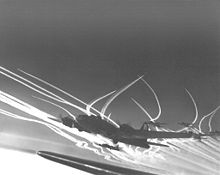
The 564th Missile Squadron is an inactive United States Air Force unit. It was last assigned to the 341st Operations Group at Malmstrom Air Force Base, Montana, where it was inactivated on 19 August 2008.
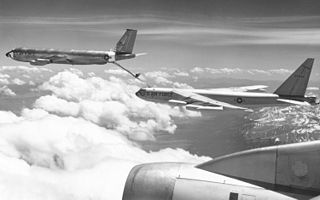
The 462d Air Expeditionary Group is a provisional unit of the United States Air Force. It is assigned to Air Mobility Command to activate or inactivate as needed to meet operational requirements. Its last assignment was at Naval Support Facility Diego Garcia, British Indian Ocean Territory.
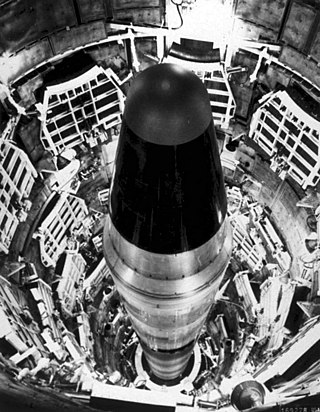
The 390th Strategic Missile Wing was an intercontinental ballistic missile organization of the United States Air Force. Part of Strategic Air Command, it was stationed at Davis–Monthan Air Force Base, Arizona.

The 66th Missile Squadron is an inactive United States Air Force unit. It was last assigned to the 44th Operations Group, stationed at Ellsworth Air Force Base, South Dakota. The 66th was equipped with the LGM-30F Minuteman II Intercontinental ballistic missile, with a mission of nuclear deterrence. With the end of the Cold War, the 66th was inactivated on 1 September 1993. Number of flights 100
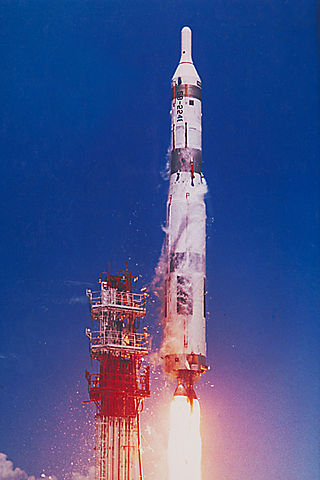
The 851st Strategic Missile Squadron is an inactive United States Air Force unit. It was last assigned to the 456th Strategic Aerospace Wing, stationed at Beale Air Force Base, California. It was equipped with the HGM-25A Titan I intercontinental ballistic missile, with a mission of nuclear deterrence. It was the last Titan I squadron to achieve alert status on 1 February 1961. The squadron was inactivated as part of the phaseout of the Titan I on 25 March 1965.

The 850th Strategic Missile Squadron is an inactive United States Air Force unit. It was last assigned to the 44th Strategic Missile Wing at Ellsworth Air Force Base, South Dakota, where it was inactivated on 25 March 1965. The squadron was first activated in 1943 as the 850th Bombardment Squadron. After training in the United States, it deployed to the European Theater of Operations and participated in the strategic bombing campaign against Germany. Following V-E Day, the squadron returned to the United States, where it was inactivated in November 1945.
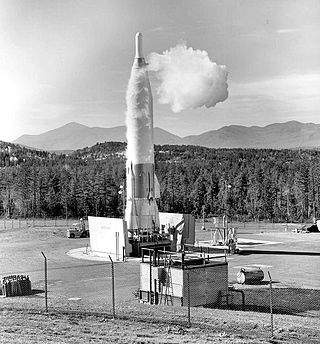
The 556th Strategic Missile Squadron is an inactive United States Air Force unit. It was last assigned to the 820th Strategic Aerospace Division at Plattsburgh Air Force Base, New York, where it was inactivated in 1965 with the withdrawal of the Atlas missile from operations.

The 725th Strategic Missile Squadron is an inactive United States Air Force unit. It was last assigned to the 451st Strategic Missile Wing at Lowry Air Force Base, Colorado, where it was inactivated on 25 June 1965.

The 724th Strategic Missile Squadron is an inactive United States Air Force unit. It was last assigned to the 451st Strategic Missile Wing at Lowry Air Force Base, Colorado, where it was inactivated on 25 June 1965.

The 579th Strategic Missile Squadron is an inactive United States Air Force unit. It was last assigned to the 6th Strategic Aerospace Wing at Walker Air Force Base, New Mexico
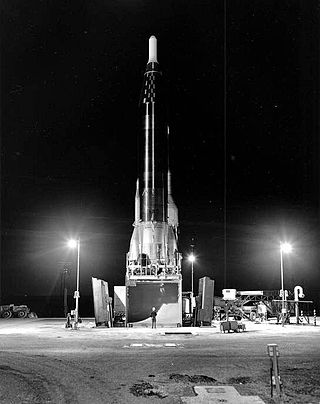
The 578th Strategic Missile Squadron is an inactive United States Air Force unit. It was last assigned to the 96th Strategic Aerospace Wing at Dyess Air Force Base, Texas, where it served from July 1961 until it was inactivated as part of the phaseout of the SM-65F Atlas intercontinental ballistic missile on 25 March 1965.

The 577th Strategic Missile Squadron is an inactive United States Air Force unit. It was last assigned to the 11th Strategic Aerospace Wing, stationed at Altus Air Force Base, Oklahoma.
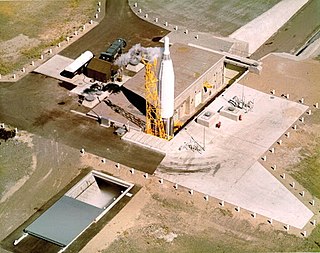
The 567th Strategic Missile Squadron is an inactive United States Air Force unit. It was last assigned to the 92d Strategic Aerospace Wing at Fairchild Air Force Base, Washington, where it was inactivated as part of the phaseout of the Atlas ICBM on 25 June 1965. It was equipped with the SM-65E Atlas ICBM, with a mission of nuclear deterrence.
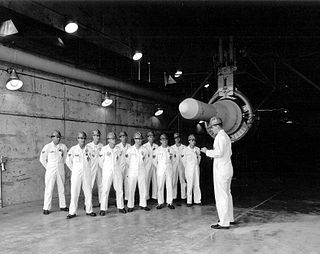
The 565th Strategic Missile Squadron is an inactive United States Air Force unit. It was last assigned to the 389th Strategic Missile Wing at Francis E. Warren Air Force Base, Wyoming, where it was inactivated on 25 March 1965. The squadron was equipped with SM-65D Atlases and was the second Strategic Air Command Intercontinental ballistic missile squadron to go on nuclear alert status.
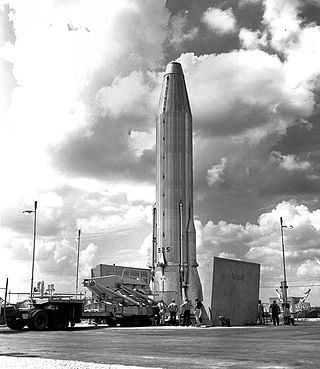
The 551st Strategic Missile Squadron is an inactive United States Air Force unit. It was last assigned to the 98th Strategic Aerospace Wing at Lincoln Air Force Base, Nebraska. The squadron was equipped with the SM-65F Atlas intercontinental ballistic missile, with a mission of nuclear deterrence. The squadron was inactivated on 25 June 1965 as part of the phaseout of the Atlas.

The 550th Strategic Missile Squadron is an inactive United States Air Force unit. It was last assigned to the 310th Strategic Aerospace Wing at Schilling Air Force Base, Kansas. The squadron was equipped with the SM-65F Atlas intercontinental ballistic missile, with a mission of nuclear deterrence. The squadron was inactivated on 25 June 1965 as part of the phaseout of the Atlas.

The 548th Strategic Missile Squadron is an inactive United States Air Force unit. It was last assigned to the 40th Strategic Aerospace Wing at Forbes Air Force Base, Kansas, where it was inactivated on 25 March 1965. At Forbes, the 548th was equipped with the SM-65E Atlas intercontinental ballistic missile, with a mission of nuclear deterrence.
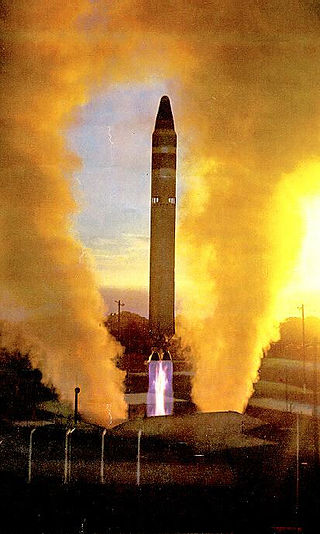
The 571st Strategic Missile Squadron is an inactive United States Air Force unit. It was last assigned to the 390th Strategic Missile Wing at Davis-Monthan Air Force Base, Arizona. It was equipped with the LGM-25C Titan II intercontinental ballistic missile, with a mission of nuclear deterrence. The squadron was inactivated as part of the phaseout of the Titan II on 3 December 1983.

The 568th Strategic Missile Squadron is an inactive United States Air Force unit. It was last assigned to the 462d Strategic Aerospace Wing at Larson Air Force Base, Washington. It was equipped with the first-generation SM-68 Titan I intercontinental ballistic missile, with a mission of nuclear deterrence. The squadron was inactivated as part of the phaseout of the Titan I ICBM on 25 March 1965.

The 569th Strategic Missile Squadron is an inactive United States Air Force unit. It was last assigned to the 9th Strategic Aerospace Wing at Mountain Home Air Force Base, Idaho. It was equipped with the first-generation SM-68 Titan I intercontinental ballistic missile, with a mission of nuclear deterrence. The squadron was inactivated as part of the phaseout of the Titan I ICBM on 25 June 1965.


